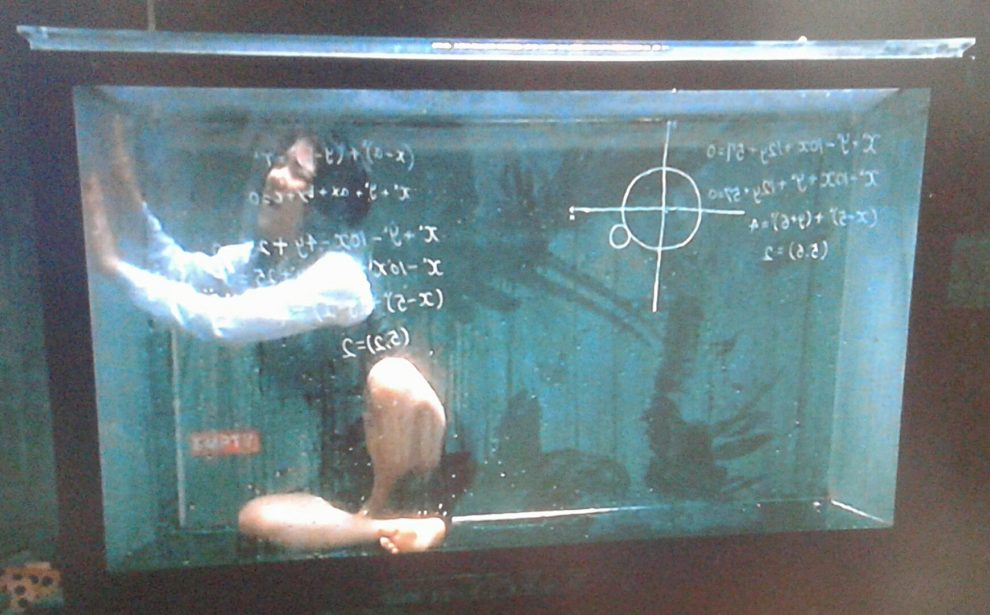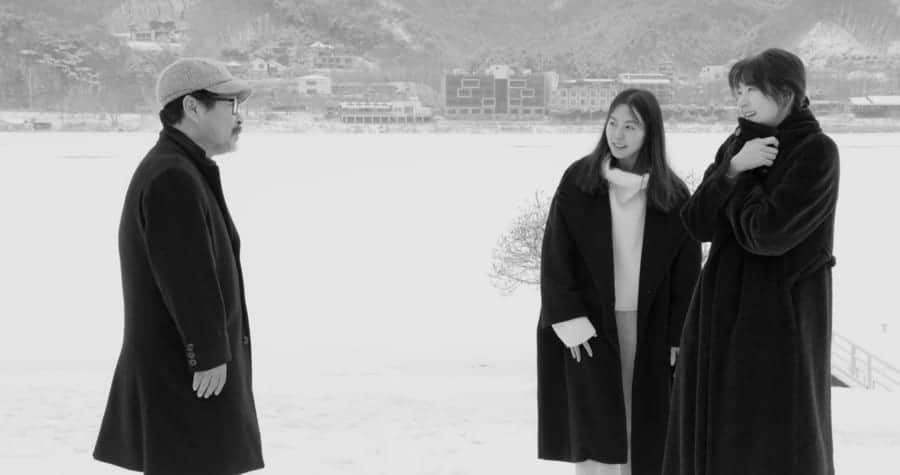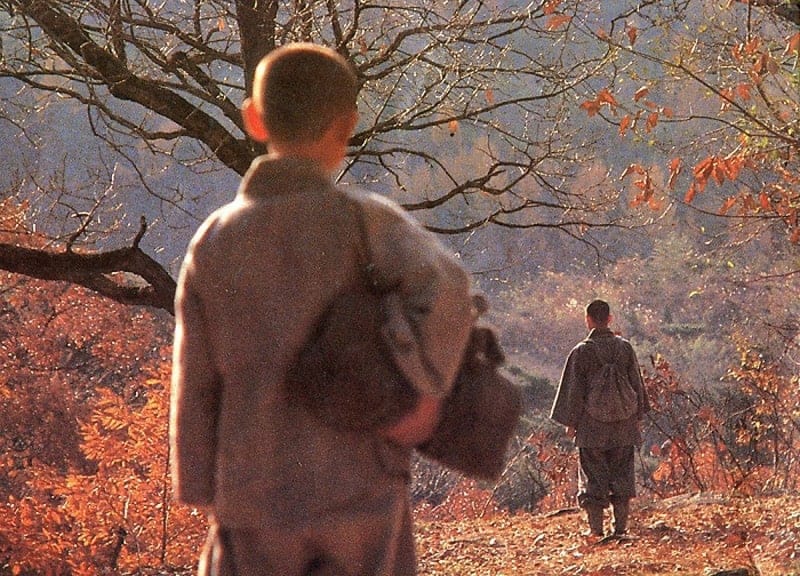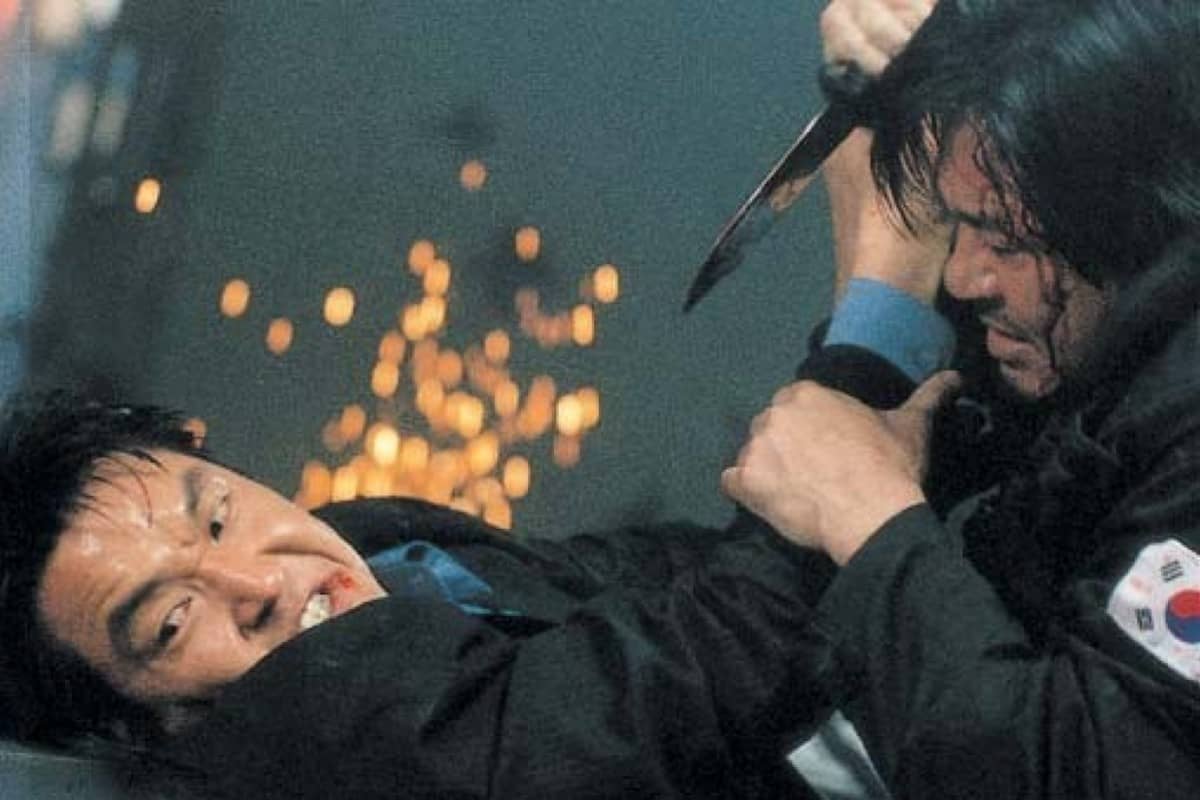During the beginning of the millennium, there was a series of school set horror films that emerged from Korea in the midst of the genre's explosion that had followed the J-Horror template set by the likes of “Ringu”. Horror is always a fascinating genre of cinema, as perhaps more than any other, it reflects on society, its fears and prejudices. These school set productions, whilst demonstrating all the standard jump scares and classical ghost story narratives, were also a reflection on their time. They would explore the pressures and expectations on students and the hierarchies that underpinned their place in society and by proxy their place within the educational setting. Coming a few years after that was “Death Bell” – the only horror movie to originate from Korea in 2008. Whilst horror had dipped in the box office by this time, the social aspects remained, and we get a more grand guignol take on this sub-genre.
Buy This Title
A specially created class of students must stay at their school over the weekend to prepare for an impending visit from their “sister” school. Prior to the weekend, one student breaks down and is taken away in an ambulance after experiencing what he believes to be supernatural happenings. As the weekend starts, one student disappears and another appears to have been taken. The video screens reveal one of the students trapped in a glass tank with an equation on the outside. A voice over the PA system reveals that they must answer the question or the student dies. With everyone arguing, it proves too late to save her and then they notice one of their group missing. Warned that they cannot phone or leave, their numbers also start to drop as one by one some of the students get taken. As the questions reveal clues to the real reason for their nightmare, the questions become who or what is causing this and where is the true guilty party in all of this.

Whilst comparing films sometimes can be appropriate, it can also be a bit of a disservice to the actual feature as it draws attention to others within the genre, with “Death Bell” being rather lazily liked as “Battle Royale meets Saw”. Let's address that and clear things up. The “Battle Royale” references are slim. Both feature a school class and have a running sidebar that crops up when a student dies. However, that is as far as the similarities go. The “Saw” link is perhaps a bit more pertinent in terms of visual style. The traps are shot in a similar bleak tone and there is a link to why particular students are being placed in these situations that feels like the “morality” that underpins Jigsaw's methods in the American franchise. For me though it feels closer to the “Saw” sequels in that there is no real intention for them to escape. Here though, is where the comparison diverges. With the “Saw” series it is for the individuals within the traps to find their escape or collaborate. “Death Bell” sees the other students need to answer questions to save their classmates. Something that does not go according to plan, with the first death going almost un-noticed as teachers and students argue.
The outset sets it up as a supernatural horror in line with much of the sub-genre of school horror of Korean cinema. Despite the end coda it is essentially a diversion as the horror is much more “real” than supernatural which does set it apart from its contemporaries. It is suitably bloody and for the most part well directed by Chang in his feature debut. There are a couple of moments where the visual is cut too rapidly and overblown, but for the most part, there is a consistency to the piece.
Where it struggles is in developing empathy for the cast. The first few victims we know nothing about and so are mere plot devices and as such their fate is already predetermined for the audience. It is only as it starts to focus on a few central figures that there becomes any form of connection. Nam Gyu-ri as Ina is set up as the genre's “Final Girl”. Determined to protect her friends but also ultimately revealed to be separate from the events that trigger the plot, she has a good presence and holds her own as the central figure as the action picks up. Heading up the senior roles is Lee Soo-hyeok as Mr. Kim. Initially the more laid-back tutor in the opening scenes, he turns into a more action focused character as the narrative unfolds. The rest are standard clichés in terms of character, but this is a movie more focused on its set pieces as opposed to character development. It's a regular problem for horror films and what it gains in taut pacing and bloodletting, it loses in dramatic weight.
It's difficult to talk about the context in “Death Bell” without revealing too much of the plot. Yet it does focus on the pressures to achieve grades, both from a student and teacher perspective. Early scenes reveal the nightmares students are having prior and the need for maintaining a reputation. The special class are kept back over the weekend to help show off their school when their “sister” one pays a visit. The consequences of this pressure are only revealed as the narrative progresses and shows that human nature is ultimately the true danger. The almost “red herring” of the supernatural element allows for it to share a linkage with its predecessors but also to create its own path given the diminishing returns of horror at this time. By 2008, we had seen every variation of ghost story imaginable and it makes a good diversion from these, even if it does try to have its cake and eat it in the final scene. The set pieces are suitably gory and have the required malevolent streak that fits its story arc.
What we have in “Death Bell” is a fully transnational example of a horror film. The surface sheen is taken from the classical South East Asian template of the avenging ghost, mixed with the social commentary of the Korean educational system. The central core is an interpretation of the “torture porn” genre of Western Horror that was doing the rounds. This cultural immersion allows it to stand apart even if it doesn't fully deliver. This is a feature for horror fans that are less concerned with fully rounded characterization. Designed as a thrill ride that moves from one set piece to the other it's an enjoyable piece but one that you feel could have been more if more thought had been placed in its construction.
















